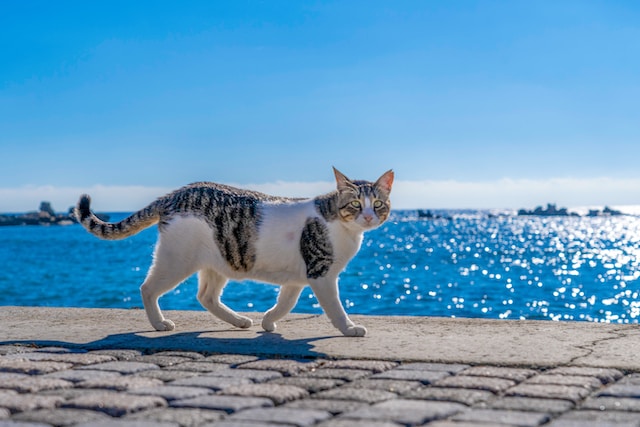Cats, with their enigmatic nature and independent spirit, have a natural inclination for exploring the world around them. For cat owners, the urge to keep a watchful eye on their feline friends while they venture into the wild can be both exciting and challenging. In this article, we dive into the art of cat tracking,
Cats, with their enigmatic nature and independent spirit, have a natural inclination for exploring the world around them. For cat owners, the urge to keep a watchful eye on their feline friends while they venture into the wild can be both exciting and challenging. In this article, we dive into the art of cat tracking, exploring techniques and technologies that allow us to follow our curious companions’ adventures in the great outdoors.
Understanding Feline Behavior:
Before embarking on the journey of cat tracking, it is essential to understand the behavior and instincts of our feline friends. Cats are natural explorers, skilled climbers, and stealthy hunters. They possess a strong sense of territoriality and tend to follow predictable routes in their hunting and exploration endeavors. By observing and familiarizing ourselves with their behavior patterns, we can develop a better understanding of where they may venture and how to track their movements.
Visual Clues and Signatures:
When our cats venture outdoors, they often leave behind subtle visual clues that can help us retrace their steps. Paw prints on soft soil, flattened grass, or disturbed foliage can indicate recent visits. Scratched tree trunks or objects with fur caught in them may reveal areas where cats have marked their territory. By carefully examining these signs, we can begin to piece together their outdoor journeys.
Technology and Cat Tracking Devices:
Advancements in technology have opened up new possibilities for tracking our feline friends. Cat tracking devices, such as GPS collars or tags, provide real-time location information, allowing us to monitor our cats’ movements remotely. These devices can be especially useful for outdoor cats who roam over larger distances. However, it is important to choose lightweight and comfortable tracking devices that won’t hinder their natural behaviors or pose any risks.
Camera Traps and Wildlife Monitoring:
Setting up camera traps in strategic locations can provide fascinating insights into our cats’ outdoor adventures. These motion-activated cameras capture images or videos of wildlife encounters, hunting moments, or interactions with other cats. Camera traps not only allow us to observe our cats in their natural habitat but also contribute to wildlife monitoring efforts, helping us better understand the local ecosystem.
Community Engagement and Lost Pet Networks:
In the unfortunate event that a cat goes missing or becomes lost during its outdoor escapades, community engagement becomes vital. Online lost pet networks, social media groups, and local community organizations can be valuable resources for spreading the word and enlisting the help of neighbors and fellow cat lovers. Sharing photos, descriptions, and relevant information can increase the chances of locating a lost cat and reuniting them with their worried owners.
Collaboration with Veterinarians and Microchipping:
Collaborating with veterinarians plays a crucial role in cat tracking efforts. Microchipping our feline companions ensures they can be easily identified if they are found by others or brought to a veterinary clinic or shelter. Keeping microchip information up to date with accurate contact details is essential for a swift reunion in case of separation.
Balancing Safety and Freedom:
While cat tracking provides valuable insights into our cats’ outdoor adventures, it is important to strike a balance between their safety and freedom. Understanding the potential risks and dangers of the outdoor environment, such as traffic, aggressive animals, or hazardous substances, allows us to make informed decisions about outdoor access. Supervised outdoor time, enclosed outdoor spaces, or secure gardens provide safe environments for cats to explore while minimizing risks.
Conclusion:
The art of cat tracking combines a deep understanding of feline behavior with modern technologies and community engagement. By observing visual clues, utilizing tracking devices, setting up camera traps, and collaborating with the community and veterinarians, we can unravel the mysteries of our cats’ outdoor.

















Leave a Comment
Your email address will not be published. Required fields are marked with *